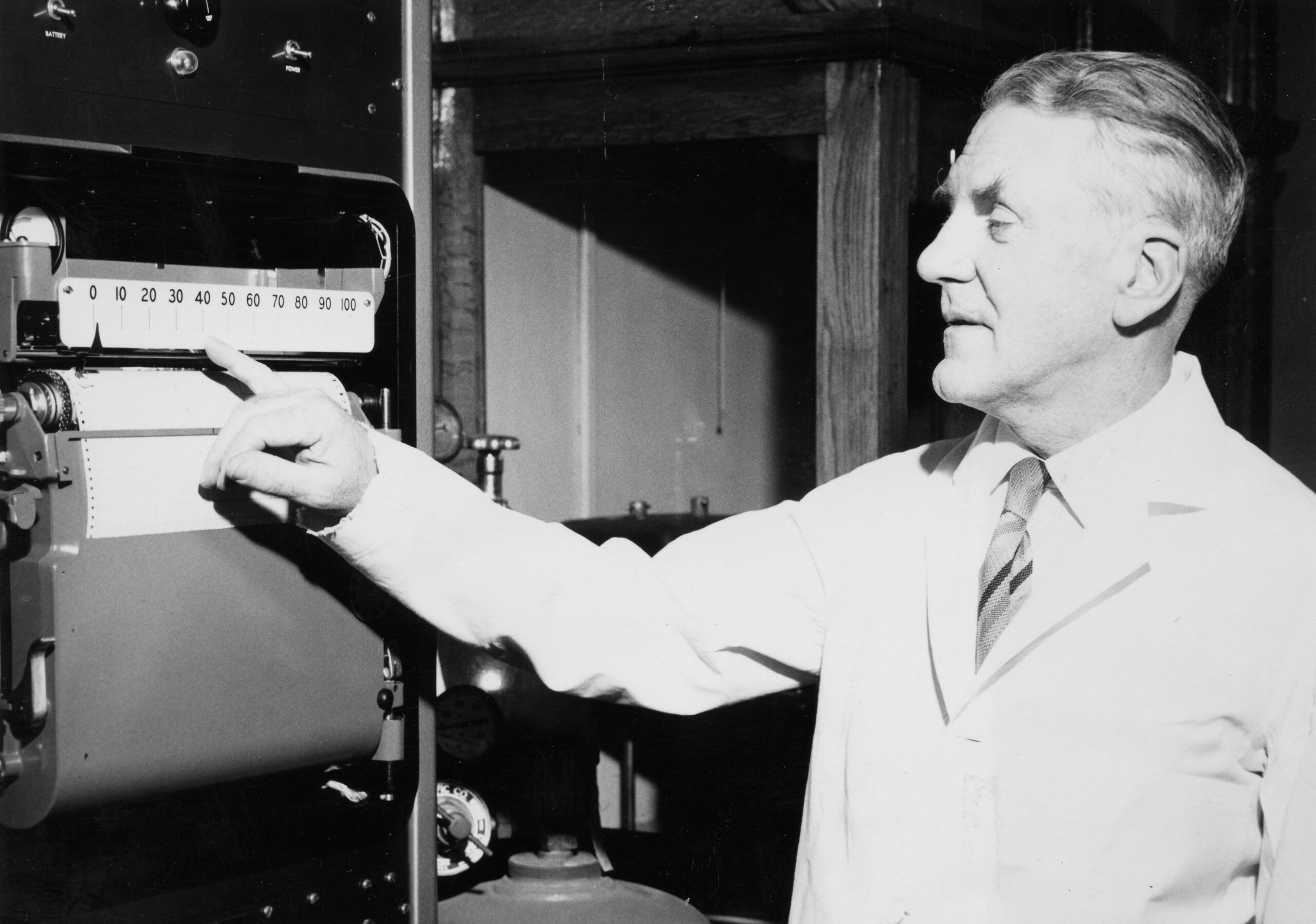In the first half of the 20th century, two faculty members of the University of Nebraska College of Medicine researched the therapeutic potential of curare. A. Ross McIntyre, MD, PhD, and A.E. Bennett, MD, explored how the medical community could use the alkaloid plant extract.
Dr. McIntyre was born in London in 1902. He received his bachelor’s degree, PhD and medical degree from the University of Chicago. He taught biochemistry and pharmacology at the University of Chicago from 1928 through 1931, and he taught pharmacology at the University of Michigan from 1931 to 1932. Dr. McIntyre moved to Nebraska in 1932 to teach in the department of physiology and pharmacology. He served as chair of the department from 1935 to 1967.
Dr. McIntyre researched curare, a substance extracted from plants and used by the indigenous people of Central and South America to poison arrows used in hunting. When curare contaminates a wound in sufficient dosage, it can cause death by asphyxiation as it paralyzes the diaphragm. In the 1940s, physicians were experimenting with curare as an anesthetic for surgery. In 1947, Dr. McIntyre published a book on his work, “Curare: Its History, Nature, and Clinical Use.”
A colleague of Dr. McIntyre, Dr. Bennett, in the department of neurology and psychiatry, also researched curare’s medical usage. Dr. Bennett was born in Alliance, Nebraska, in 1898. He received his medical degree from the University of Nebraska College of Medicine in 1921. Dr. Bennett practiced at Bishop Clarkson Memorial Hospital from 1924 through 1948 and served as a faculty member at the University of Nebraska College of Medicine from 1928 to 1947. He served as chair of the department of neurology and psychiatry in 1947.
Dr. Bennett studied curare to prevent complications during convulsive shock therapy, today known as electroconvulsive therapy. ECT is a treatment in which physicians use electricity to cause a generalized seizure without convulsions. It is used to manage refractory mental disorders, such as major depressive disorder, mania and catatonia. Curare is a paralyzing agent that acts as a muscle relaxant during the procedure.
Thanks to Drs. McIntyre and Bennett, pharmacology has expanded its knowledge of curare and its benefits to medical treatment. The Leon S. McGoogan Health Sciences Library holds a copy of Dr. McIntyre’s book in its Nebraska Collection, a non-circulating collection of materials related to the history of the health sciences in Nebraska. Individuals interested in viewing Dr. McIntyre’s book should email rare book librarian Erin Torell.

Dear Erin Torell,
Thank you for the article in your news release on my father, Dr. A. Ross McIntyre, MD, PhD. I would like to clarify a couple of things and add some information that enhances his work and focuses some bright light on the University of Nebraska.
Curare is an adjunct to General Anesthesia and is not an anesthetic itself. The reason it is so important is that it interferes with the nerve-muscle interaction causing relaxation of the skeletal muscle. Prior to curare the anesthesiologist had to use much more anesthesia to get the muscle relaxation needed for major surgery. That was extremely dangerous to the patient. The adding of curare to the regimen reduced the amount needed and greatly increased the safety of surgery.
The Dr. Bennett you mentioned should read, Dr. A.E. Bennett, so as not to be confused with, Dr. Lawrence Bennett, who was a colleague in the Physiology Department and for whom Bennett Hall is named.
In the area of enhancement. A. Ross McIntyre, MD,PhD, had a Distinguished Service Award form the University of Nebraska. A Distinguished Service Award for Contributions to Medical Sciences from the University of Chicago in 1952
In 1954 the Academia Nazionali Dei Lancei of Italy, awarded its First International Award, For Advances in Anesthesiology to, A. Ross McIntyre, MD, PhD, (shared with, Dr. H.R. Griffith, of Toronto, Canada). This Academia is one of the oldest Scientific Society’s in the world (started i 1603) and has as some of its previous members and award recipients: Galileo admitted in 1611, Louis Pasteur, Albert Einstein, Enrico Fermi and Max Planck. Mcintyre and Griffith are in good company.
I think that this information should help clarify certain aspects Dr. McIntyre’s work t and the prizes that enhance the reputation of the University.
Regards,
Donald O. McIntyre, MD (UNMC ’63)
macnro4s@gmail.com